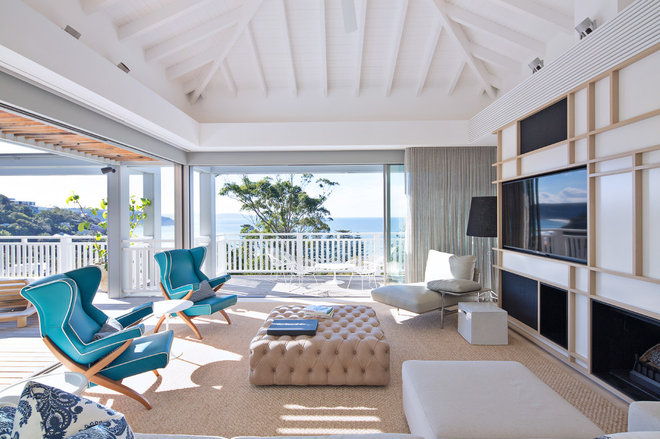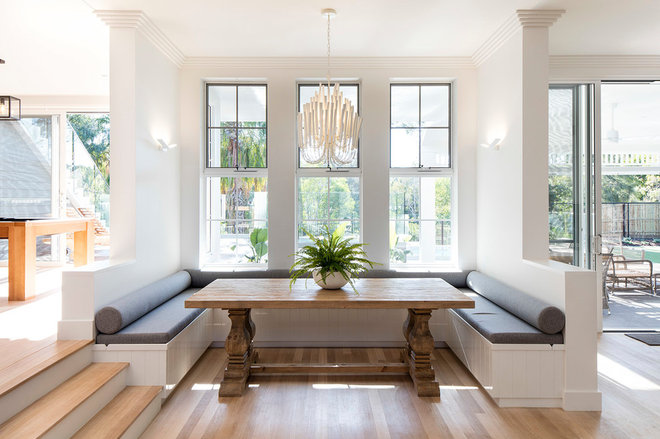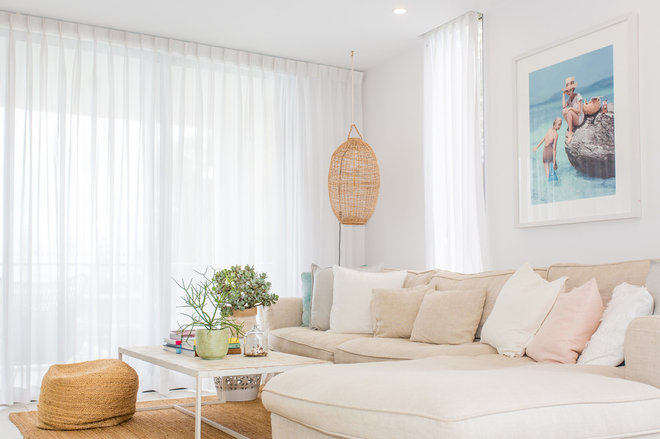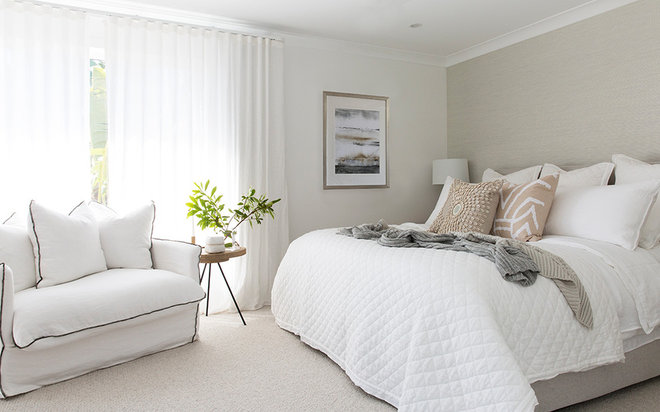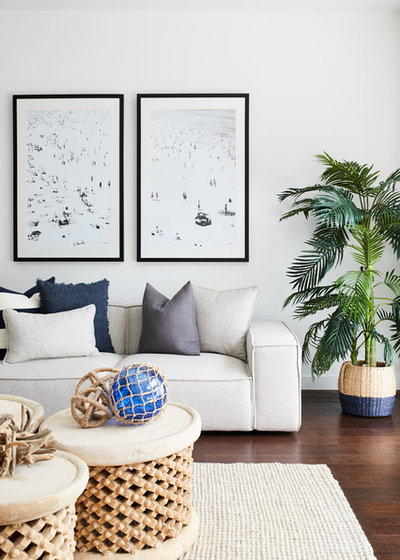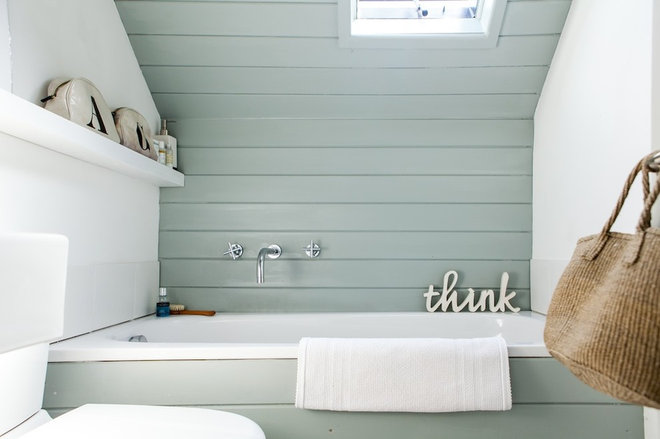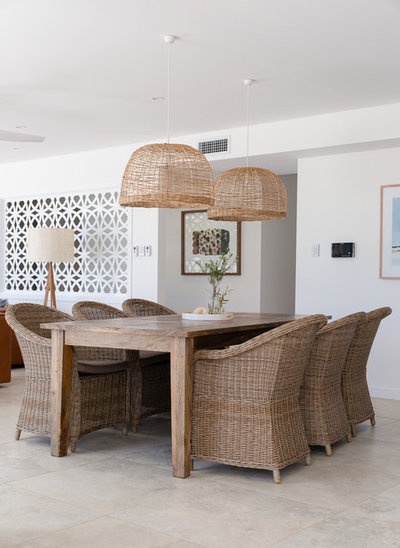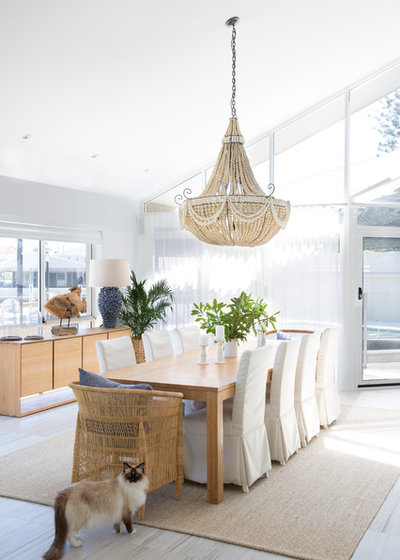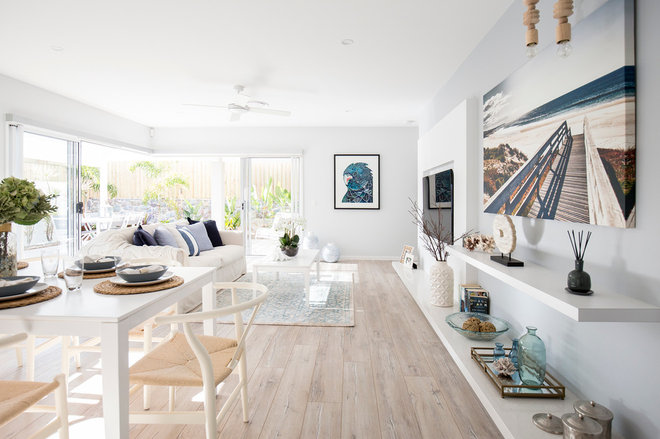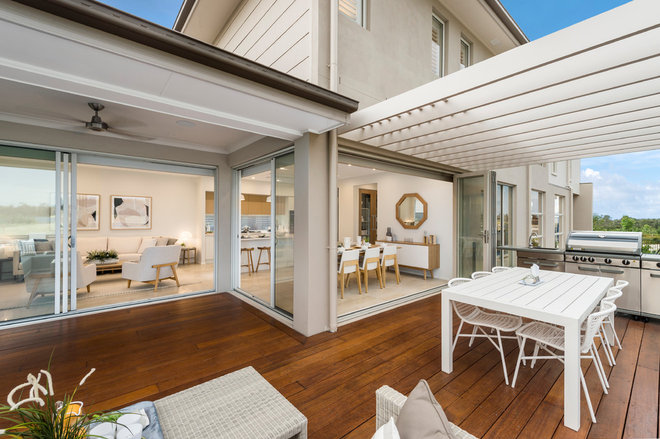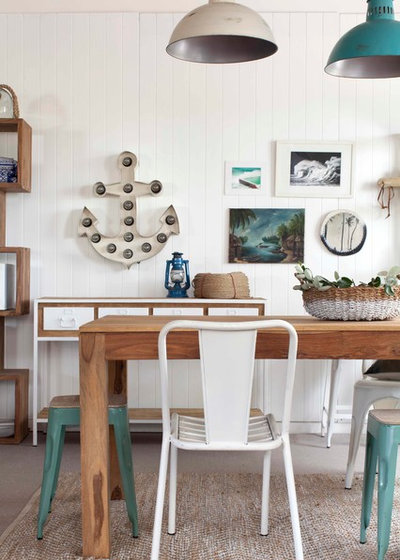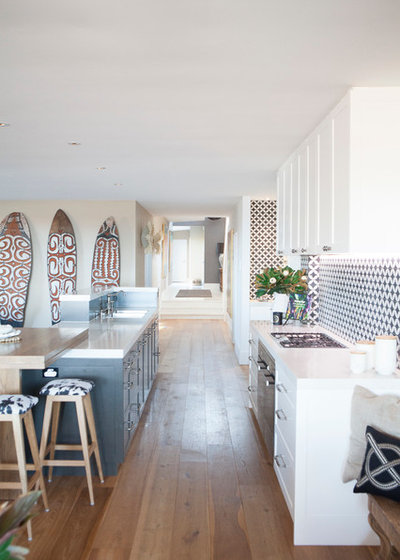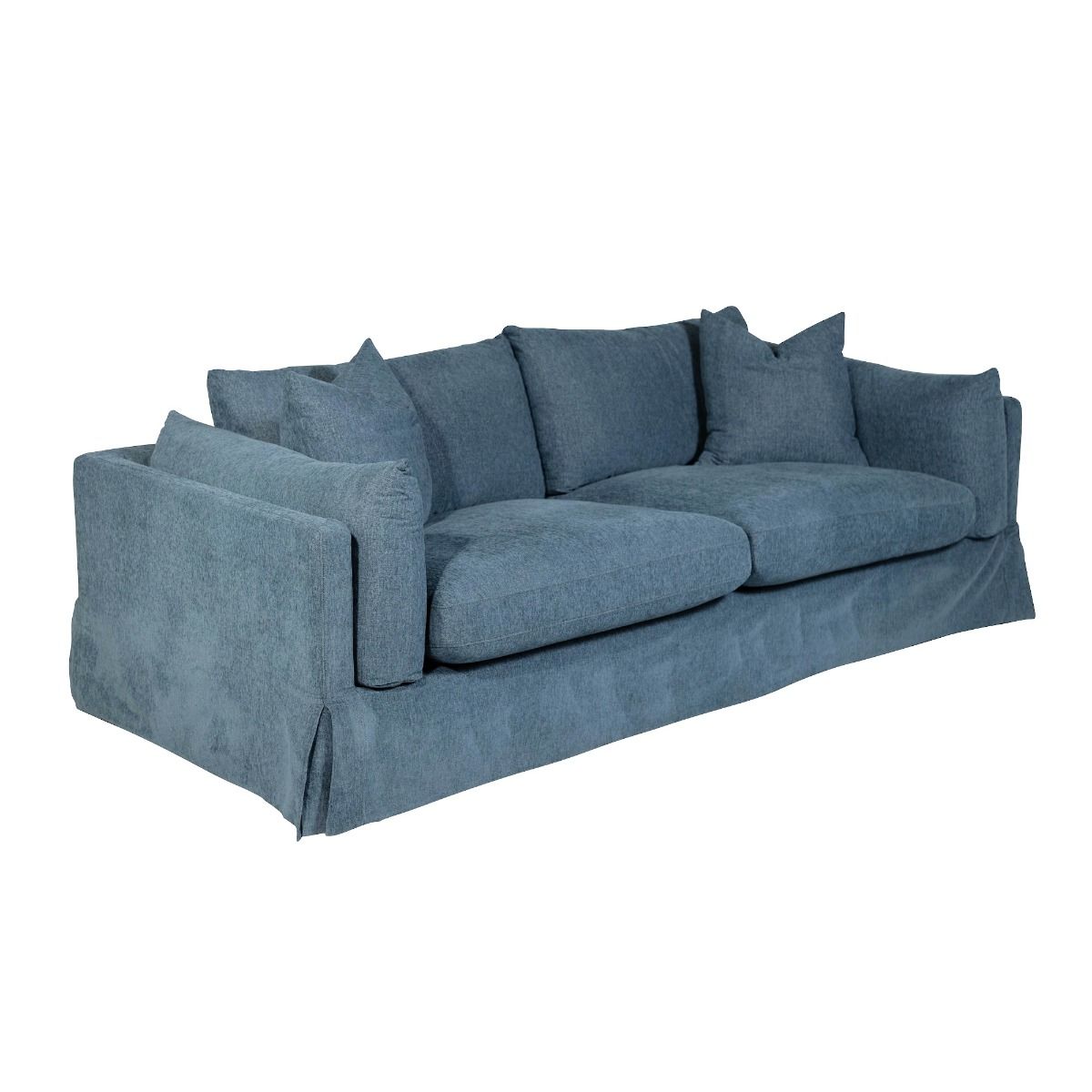So Your Style is - Coastal
Author: Lisa Frederick
Bright and breezy, coastal style transports you straight to the beach no matter where you call home
Coastal style is at its best when it sets a mood rather than hitting people over the head with its ‘beachiness’ (oars! Fish! Lifebuoys!). Although seaside motifs feel apt and appropriate, you don’t need to scoop up every piece you spot with a sand dollar on it; a coastal space simply evokes the easy, carefree feel of boating and beach-combing. And the bonus? You can pull off the look even if you’re hundreds of miles from a shoreline.
You’ll love it if… A pedicure means strolling barefoot in the sand. You chose your silver pattern for its shell motif. In your world, it’s always linen season. It’s not a question of whether to holiday at the beach, but which beach you haven’t explored yet.
Natural light may be the single most important, yet most overlooked, element of coastal style. Think about it: when was the last time you entered a beach house that felt dim and cramped (and if you did, think how fast you wanted to scoot out of there)? That’s one reason white is the hallmark colour of coastal interiors: it spreads and amplifies light rather than soaking it up.
Find a local interior designer or decorator on Houzz to help you nail the beachy look
Something different: While coastal interiors aren’t known for shine and shimmer, a few carefully chosen accents can help diffuse light even further. Consider a mirror mounted opposite a window or a glass-topped table in a sunny breakfast nook. Just be sure not to bring in too many high-gloss notes as you’ll lose the cosy ambience.
Read more about decorating styles
In coastal interiors, fabrics are simple, unassuming and put-your-feet-up comfortable. Think linen slipcovers, cotton rugs, and muslin curtain panels or floaty sheers that billow in the breeze. You can’t go wrong with pure white, but washed-out pastels or tailored stripes fit with the look as well.
Something different: The market is loaded with shell- and nautical-print fabrics – many of them tasteful and chic – so go ahead and give in to temptation. But don’t layer them to the point of kitsch. Keep these patterns minimal: a pair of throw pillows, perhaps, or a single side chair. (The same goes for wallpaper, incidentally.)
Did we mention that white is key to the coastal palette? When they’re done right, crisp white rooms are arresting in their purity and simplicity. But if they feel too austere or one-dimensional to suit you, branch out a bit. Layers of cream, beige and khaki evoke the subtlety of shifting dunes. Matt and honed finishes, rather than shine and glimmer, give the colours a soft, chalky spin.
Barely-there blue is a close runner-up as an iconic coastal colour, calling to mind the essence of ocean and sky. It’s a classic choice for bathroom tiles and bedroom walls, but it can function as a neutral anywhere, especially when you keep it tone-on-tone.
Another strategy is to bring in varying shades of a single colour, such as coral. Or add hints of classic nautical hues – sea-blue or navy and white, for example, looks as fresh as a sailor’s just-pressed uniform. The key is to stay consistent; too many colour schemes in different rooms add up to too many personalities for a single house.
Organic materials such as sea grass, straw and jute, in the guise of rugs, furnishings and accessories, bring a natural warmth and texture to coastal interiors. A few touches of rope – cabinet and drawer pulls, even stairway spindles – add lighthearted appeal yet stay true to the theme.
Something different: Break up organic surfaces with contrast. A wicker coffee table next to a rattan chaise on a sisal rug might be a bit much. This dining area juxtaposes a timber table and woven armchairs with a concrete floor to streamline the space.
While exotic hardwoods may jibe with tropical interiors, coastal style dictates a lighter touch. Picture driftwood: worn smooth and bleached out, with a salt-kissed patina. That’s the look you’re after. Whitewashed or pickled woods, blond maple and ash, or bamboo – on flooring as well as furniture – feel pitch perfect. Painted planks and wainscoting are coastal classics as well.
Something different: Darker woods have a place in this style, but they’re generally the exception rather than the rule. A walnut chest or teak armoire can look stunning against a room full of light colours, as long as the deeper tones don’t overtake the space.
Like the beach itself, coastal rooms should feel breezy, so don’t stifle them with a surfeit of furniture and bric-a-brac. Decorate with an eye to maintaining clear vistas and sightlines – accent the periphery of a space rather than clogging its centre. Even if there’s no briny air to blow through the house, it’s nice to feel as though it could.
Imagine flopping into a velvet armchair in a wet swimsuit or dumping shells onto a gleaming mahogany table. Did you wince? Coastal furniture should give the impression that it can stand up to salty air and sandy feet, even if you actually live on a suburban street in western Sydney. Slipcovers, sturdy timber tables and case goods, wicker and even thick glass fit the bill.
Something different: Casual doesn’t mean that you have to sacrifice elegance. You’ll find lots of high-style pieces in materials that can take a little wear and tear. For upholstered furnishings, consider outdoor fabrics, which come in designs and colours that look as spot on in a living room as in a screened-in verandah.
What did you bring home from your last trip to the beach? Odds are, you filled your tote bag with shells, sea glass, maybe an old ship’s cleat or two. Take inspiration from these finds in choosing small accents. The key word is restraint. One or two starfish on a shelf look striking and sculptural; baskets and vases full of them can be overkill.
Something different: Bring in a few objects that have a foot in coastal design but venture into broader territory. French-glass wine jugs or Japanese fishing-net floats, for instance, hew to the look but aren’t cornerstones of coastal style. Or experiment with new ways to display old favourites – instead of filling a lamp base with shells, frame them solo or in pairs and hang them in a grid.
<div id="hzroot3158410" style="width:300px;text-align:center;font-size:12px;padding:0;border:0;margin:0;"><div style="font-size:14px;margin-bottom:3px;"><a href="https://www.houzz.com.au/magazine/so-your-style-is-coastal-stsetivw-vs~91882963" target="_blank">So Your Style Is: Coastal</a></div><div style="padding:0;margin:0;border:0;margin-bottom:3px;"><iframe data-hzvt="MjAxOTEyMTA6NDEyMzp2aWV3R2FsbGVyeQ==" name="HouzzWidget8555422" id="HouzzWidget8555422" border=0 frameborder="0" SCROLLING=NO style="border:0 none;width:300px;height:275px;" src="https://www.houzz.com.au/jsGalleryWidget/gallery/91882963//new_window=yes/title_on=yes/width=300"></iframe></div></div>


